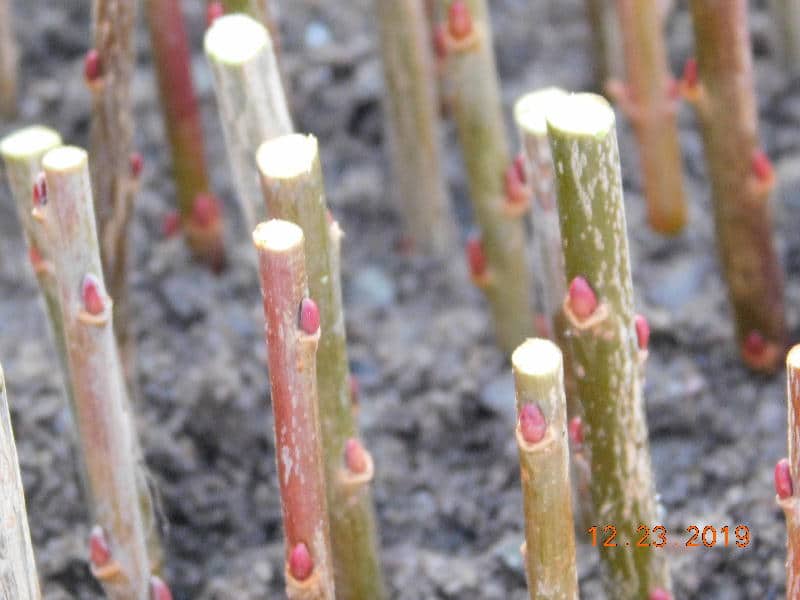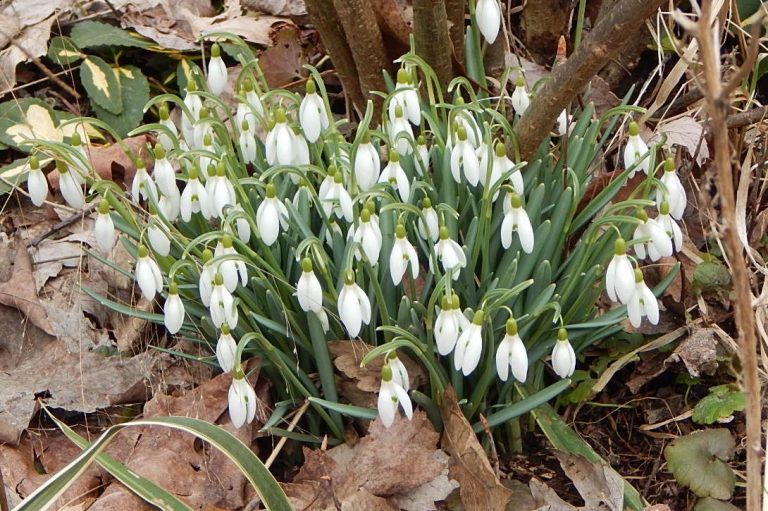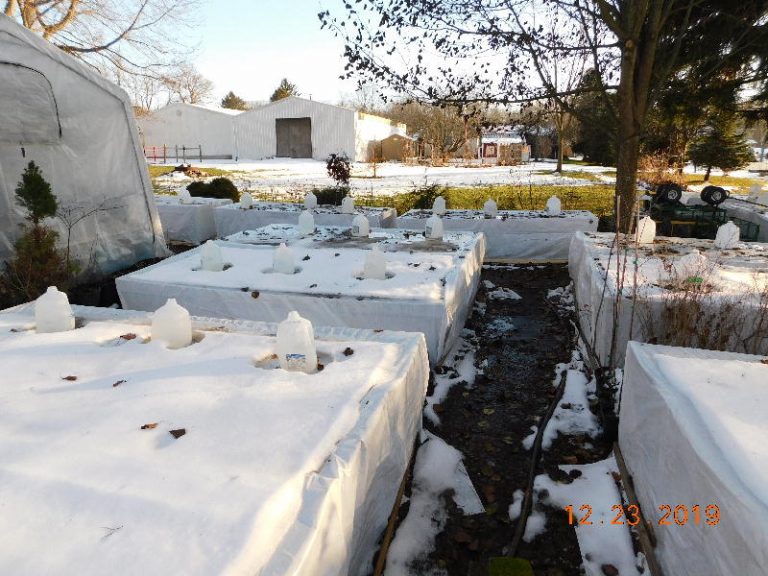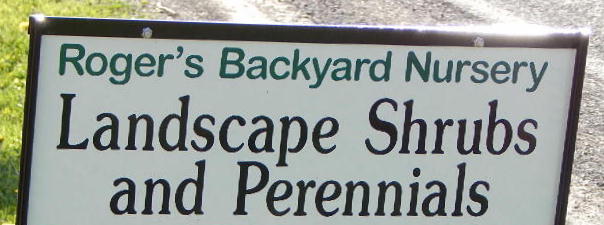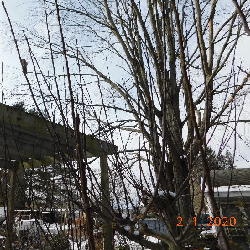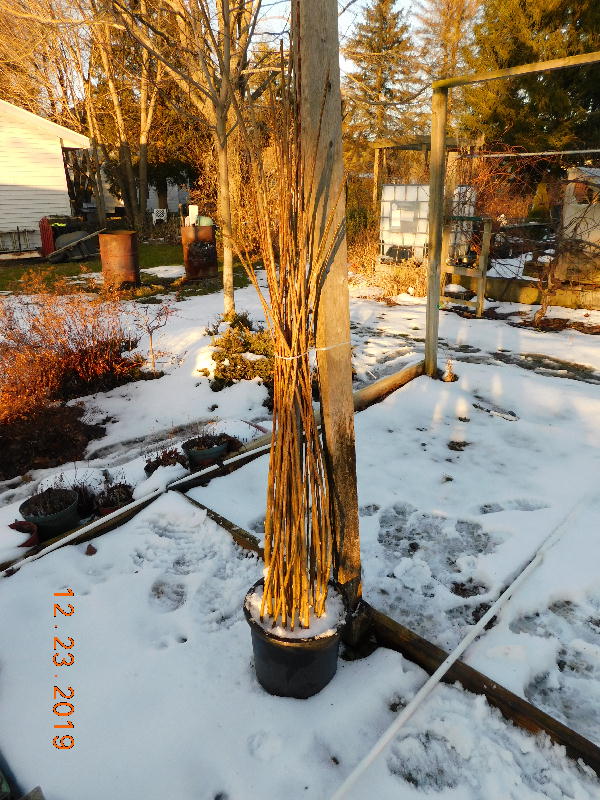Propagating Dappled Willow as Hardwood Cuttings
Propagating Dappled Willow as Hardwood Cuttings is a Simple Process
Propagating Dappled Willow as hardwood cuttings is a simple process. Dappled Willow, Salix integra ‘Hakuro Nishiki’, propagates very well as hardwood cuttings. Most members of the Willow family do. You may know it as Tri-Colored Willow or some other local name.
Spring growth brings out the pink, white and green leaves on green branches. Hence the name, Tri-Colored. As you can see by the botanical name, it is a Japanese Willow.
Check out my post about Hardwood Cuttings for some details on how they work. I do many different shrubs as hardwood cuttings during the winter. Dappled Willow is just one of the Willows I do as hardwood cuttings.
Propagation as a simple process
All it takes is some dormant cuttings and a medium to root them in. I cut branches from my larger Dappled Willow shrubs. These are my “stock” plants. I prune these plants back quite a lot in the winter.
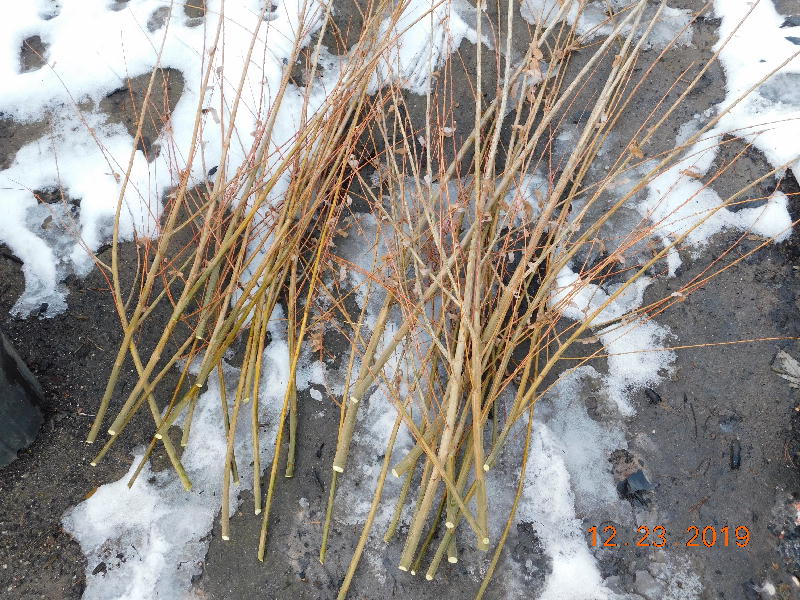
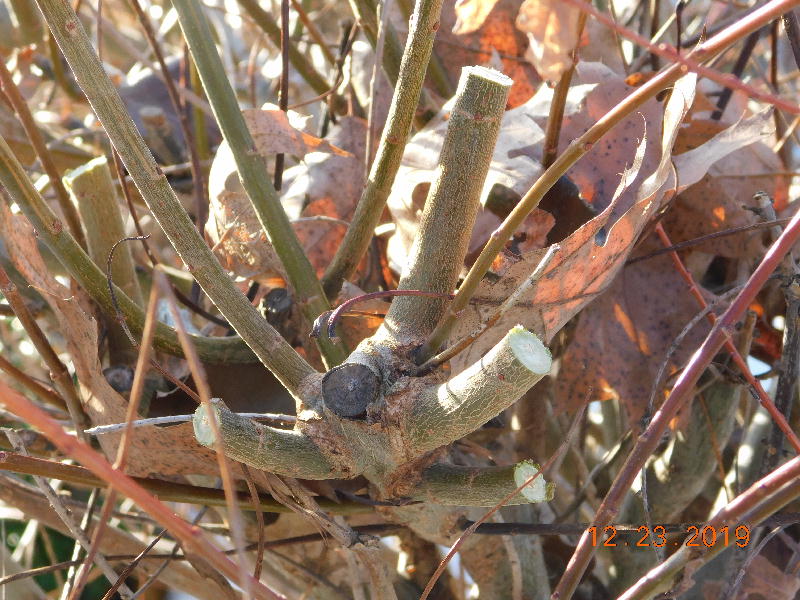
Cut, cut, cut
The branches are cut up into short lengths about 4 to 6 inches long. I like to use pieces that are about 1/4 inch to 1/2 inch in diameter. Larger and smaller diameters may also root but I like the way these sizes turn out. New young growth on large diameters doesn’t look as proportional to me. Personal opinion.
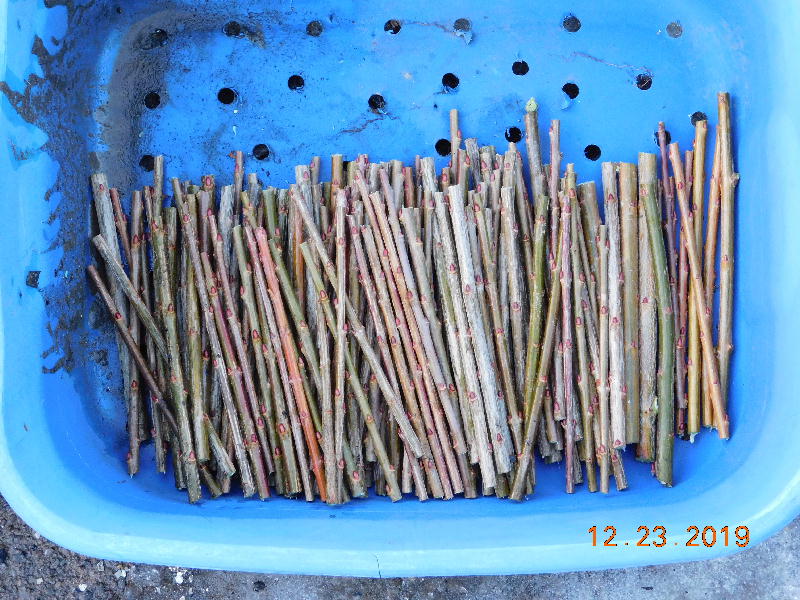

The most important part about cuttings is that they all point in the same direction. The bottom of the cutting has to go in the medium. You can see that the nodes all point up. This comes in handy if and when you drop them.
Some preparations
The cuttings can be stuck right now. But, there are a couple of steps you can do if you want. The cuttings can be wounded, scraped lightly at the bottom, and dipped in a rooting hormone.
With some varieties of shrubs, this is a good procedure to follow to ensure the best success rate. Wounding causes the cutting to form a callous. Roots form from the calloused area.
Rooting hormones come in powdered, liquid, or gel form. They are made of chemicals that stimulate the natural formation of roots. The cuttings contain those chemical but some have more than others.
Willows are some that contain quite a bit of these chemicals. A home-made rooting hormone can actually be made from soaking Willow sticks in a bucket of water for several days. It turns rancid after awhile though.
Whatever form you may select to use, make sure it is formulated for hardwood cuttings. Hardwood cuttings require a stronger formulation than softwood cuttings. Carefully follow all directions on the container.
I don’t use any wounding or hormones on my Willow cuttings. Since they contain their own strong solution I leave them alone. I stick the cuttings in containers of coarse sand. I believe that poking these into the sand creates micro-abrasions that actually wound them.
Now to be coarse
I use coarse sand as my rooting media. Perlite, vermiculite, a good draining potting soil, or any combination of these can work as your media. I prefer coarse sand.
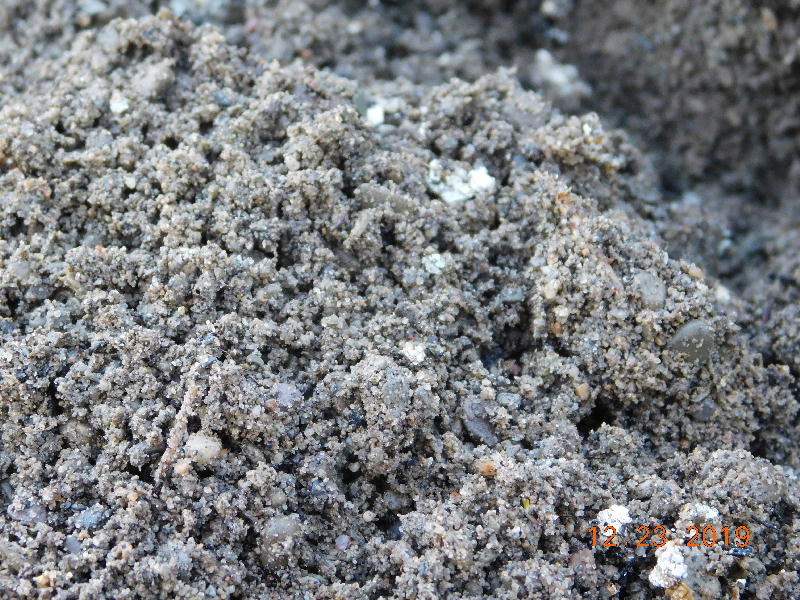
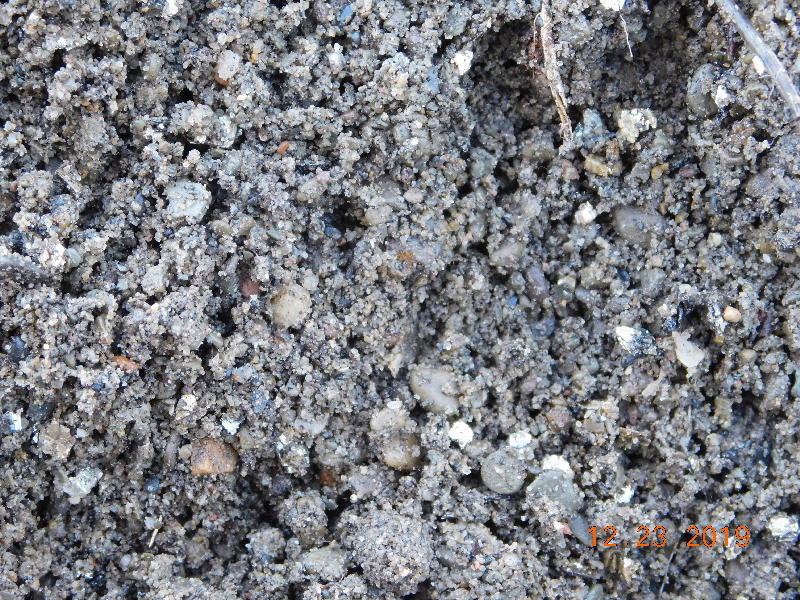
I fill dishpans or large pots with several inches of sand. Drainage holes are added to the dishpans by drilling. The cuttings are then stuck in about an inch apart and an inch and a half deep. Remember bottom goes in the sand!! They won’t root upside down.
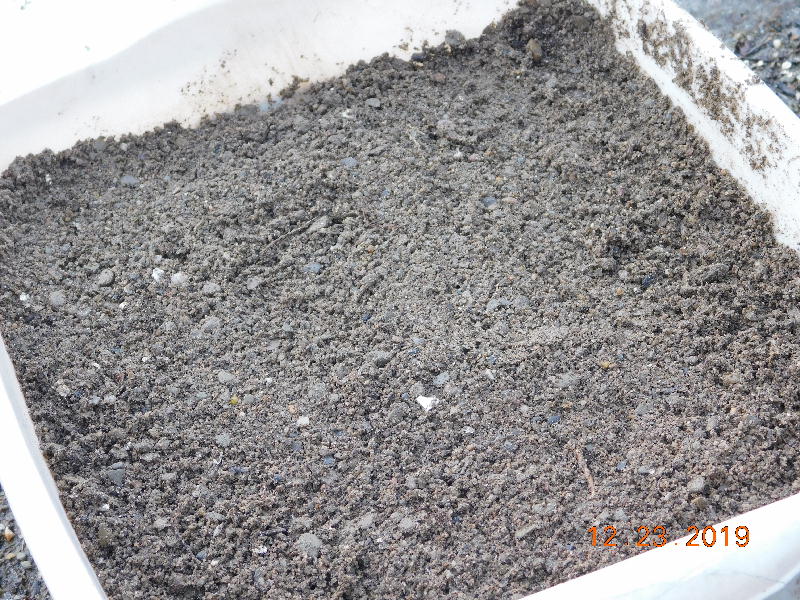
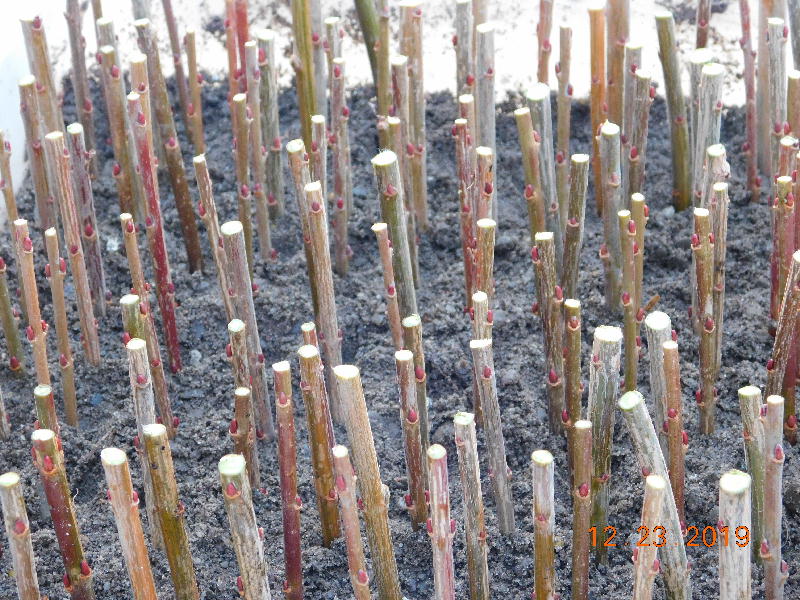
Left to the elements
Once the cuttings have all been stuck, water the container to settle the sand around the sticks. Around here, the water will freeze shortly after sticking them. When I did this batch, a thaw was underway so I threw in a bunch of the melting snow on top.
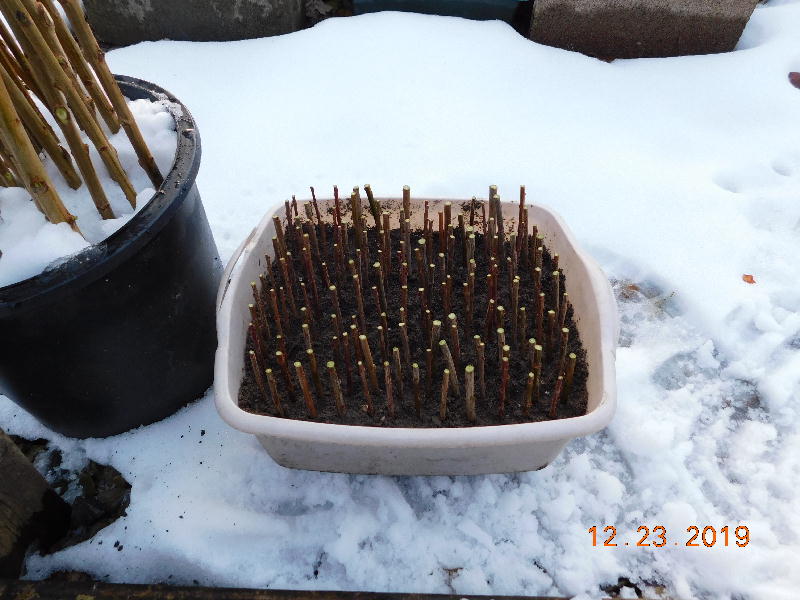
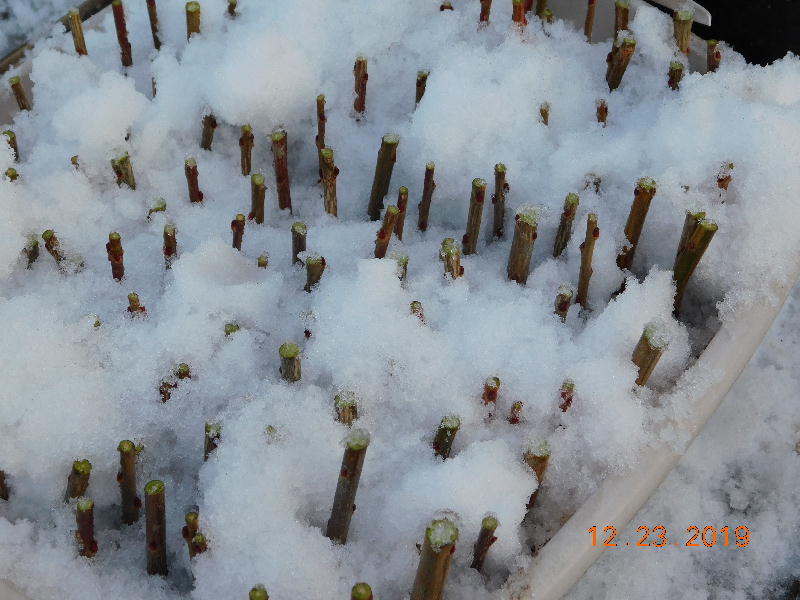
The box of cuttings is now set on the ground for the rest of the winter and into the spring season. Narrow boards or gravel underneath will aid in drainage.
Springtime
When warmer spring weather arrives, the sticks will start growing leaves. They are NOT rooted yet! The roots will follow very shortly afterward though. Willows leaf out and start rooting almost at the same time. Other plants work differently.
The sand, or other media, must remain moist to wet. If you don’t get rain you will have to water them. They can’t be allowed to dry out or they will fail. This is the main cause of failures.
Light tugging on the sticks occasionally will let you know when they have roots. Dappled Willow starts out with very fine roots, almost like hairs.
Leave them in until they start growing heavier roots. Better transplanting success comes with heavier roots. Once transplanted, keep in the shade for a couple of weeks. After that, prune and shape as you like.
If you get the hang of doing these, or you want to try something a little different, take a look at how I do Propagating tree form Dappled Willow.
